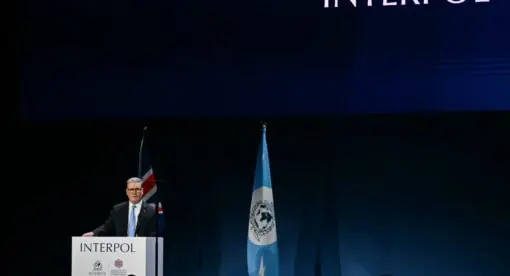This essay is part of the larger compendium “Future-Proofing U.S. Technology: Strategic Priorities Amid Chinese Tech Advancement.”
Read the full report
Read the full compendium
Executive Summary
The People’s Republic of China’s illicit transfer and weaponization of foreign critical technologies pose a dire threat to U.S. national security and global leadership. While the dominant policy discourse promotes a whole-of-government approach to mitigating these risks, less attention has been given to the potential negative effects of the shift to stronger industrial policies on the American research and development ecosystem. Even when written for strategic competitiveness, too-broad regulations stifle innovation by imposing barriers to entry for new competitors, with disproportionate negative impacts falling on parties with less access to capital and who abide strictly by the law.
While both China and the U.S. use emerging technologies to enhance their domestic security and expand foreign influence, China has been able to gain an asymmetric advantage by exploiting U.S markets and innovations through espionage, cyber intrusions, and protectionist policies. Rather than holding China accountable, the U.S. and Europe have adopted broad tariffs and industrial policies, fueling global isolationism and protectionism, which stifles innovation globally.
Successful Strategies for Critical Technology Development
This paper explores the balance between innovation and regulation in the context of dual-use technologies and explains policy recommendations to ensure U.S. industrial controls are sufficiently targeted and precise. Current policies drive market distortion, firm homogenization, and monopolistic trade practices, creating new national security vulnerabilities in the process of mitigating others. These trends are particularly salient in the emerging technology sector, where high capital investments are needed to advance fields such as artificial intelligence, bioengineering, and quantum computing.
A successful strategy for critical technology development should maximize state return on investment, align ensuing benefits with the public interest, mitigate risk of exploitation by foreign adversaries and further U.S foreign policy goals. To “win” the global technology race, the U.S needs to gain dominance over a range of strategic investments and then utilize those investments at home and abroad for public good. By applying large resources to this effort, the U.S can shape the technology sector and incentivize China to follow its leadership.
Policy Recommendations
- Diversify Critical Technology Investments
- Promote U.S. Innovation Diffusion
- Streamline and Reduce Barriers in U.S. Trade Policy
- Promote Public Sector Expertise and Digital Infrastructure
- Impose costs multilaterally, not unilaterally
Courtney Manning is the Director of AI Imperative 2030 at The American Security Project, where she leads a team of cross-disciplinary stakeholders investigating the critical geostrategic forces driving the global AI race in the 21st century. Formerly, Courtney led ASP’s research portfolios on military recruitment and readiness, strategic competition with China, and emerging technology risks. Before ASP, she worked as a geopolitical risk consultant on international human rights law, political risk, and climate security in New York, where she worked with the Peruvian government to produce a new policy framework for lithium mining and the Permanent Mission of Afghanistan to rebuild the advising team, write speeches and security strategies, and coordinate sessions at the UNSC, UNGA, and Organization of Islamic Cooperation.
The views expressed in this article are those of the author and not an official policy or position of New Lines Institute.






